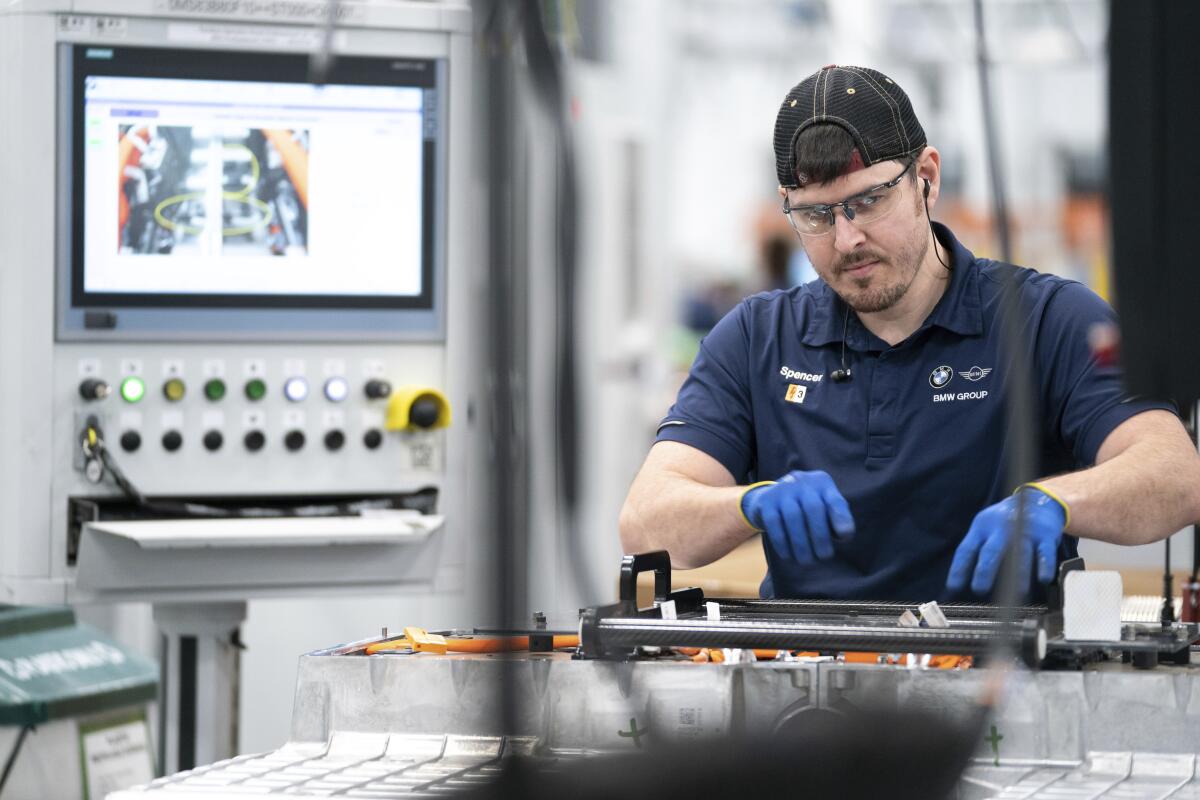U.S. economy slowed but still grew at 2.9% rate last quarter

- Share via
WASHINGTON — The U.S. economy expanded at a 2.9% annual pace from October through December, ending 2022 with momentum despite the pressure of high interest rates and widespread fears of a looming recession.
Thursday’s estimate from the Commerce Department showed that the nation’s gross domestic product — the broadest gauge of economic output — decelerated last quarter from the 3.2% annual growth rate it had posted from July through September. Most economists think the economy will slow further in the current quarter and slide into at least a mild recession by midyear.
The housing market, which is especially vulnerable to higher loan rates, has already been badly bruised: Sales of existing homes have dropped for 11 straight months.
And consumer spending, which fuels roughly 70% of the entire economy, is likely to soften in the months ahead, along with the still-resilient job market.
The economy’s expected slowdown is an intended consequence of the Federal Reserve’s aggressive series of rate hikes. The Fed’s hikes are meant to reduce growth, cool spending and crush the worst inflation bout in four decades. Last year, the Fed raised its benchmark rate seven times. It is set to do so again next week, though this time by a smaller amount.
The resilience of the U.S. job market has been a major surprise. Last year, employers added 4.5 million jobs, second only to the 6.7 million that were added in 2021 in government records going back to 1940. And last month’s unemployment rate, 3.5%, matched a 53-year low.
But the good times for America’s workers aren’t likely to last. As higher rates make borrowing and spending increasingly expensive across the economy, many consumers will spend less and employers will likely hire less.
The Fed has been responding to an inflation rate that remains stubbornly high even though it has been gradually easing. Year-over-year inflation was raging at a 9.1% rate in June, the highest level in more than 40 years. It has since cooled — to 6.5% in December — but is still far above the Fed’s 2% annual target.
Another threat to the economy this year is rooted in politics: House Republicans could refuse to raise the federal debt limit if the Biden administration rejects their demand for broad spending cuts. A failure to raise the borrowing cap would prevent the federal government from being able to pay all its obligations and could shatter its credit.
Moody’s Analytics estimates that the resulting upheaval could wipe out nearly 6 million American jobs in a recession similar to the devastating one that was triggered by the 2007-09 financial crisis.
At least the economy is likely beginning the year on firmer footing than it did at the start of 2022. Last year, the economy shrank at an annual pace of 1.6% from January through March and by a further 0.6% from April through June. Those two consecutive quarters of economic contraction raised fears that a recession might have begun.
But the economy regained strength over the summer, propelled by resilient consumer spending and higher exports. It expanded at an unexpectedly strong 3.2% annual pace from July through September.
More to Read
Inside the business of entertainment
The Wide Shot brings you news, analysis and insights on everything from streaming wars to production — and what it all means for the future.
You may occasionally receive promotional content from the Los Angeles Times.










